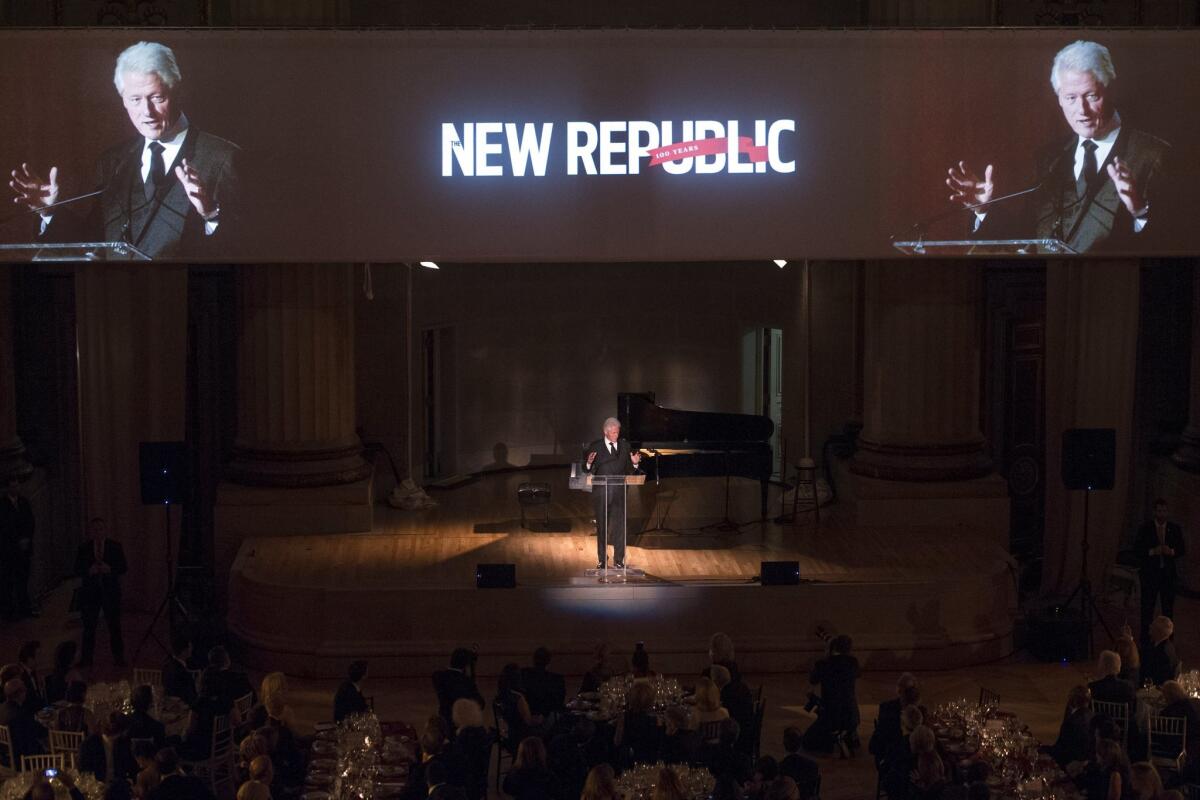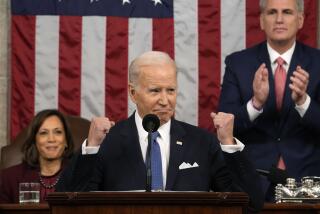Both sides in the New Republic meltdown are wrong about the magazine

Considering how devoted everyone involved in the meltdown of The New Republic is to the principles of trenchant journalism and lucid policy analysis, the most remarkable thing about the event is how obtuse they all are about the magazine’s past, present and future.
That includes not only Chris Hughes, the youthful multimillionaire owner of the century-old TNR and the instigator of the uproar, but the army of current and former writers and editors who resigned en masse last week or otherwise expressed their fury with the Hughes regime. In brief, the magazine’s past isn’t quite as glorious as the departing staff makes out, and its future is unlikely to be saved by the draconian vision Hughes seems to offer.
First, a recap.
Hughes, whose wealth comes from helping his college roommate Mark Zuckerberg launch Facebook, bought The New Republic in 2012, when he was 28. He mouthed the usual pledges characteristic of a venerable publication’s new proprietor, about preserving -- nay, enhancing -- its legacy as a public trust. He reinstated a respected editor, Franklin Foer. The magazine continued in its role as a small-circulation journal of opinion and analysis with an outsized influence in Washington.
As a reader, I found the work of many writers nurtured by the Foer regime to be indispensable -- among them Jonathan Cohn on healthcare reform, Brian Beutler and Alec MacGillis on politics, Julia Ioffe on anything she chose to write on. TNR was better than it had been in recent years, if nowhere like the reliable barometer of progressive thought that it was, say, in the 1930s and ‘40s.
Last week, everything changed. Hughes unceremoniously cut Foer loose, by hiring his replacement behind his back. Foer supposedly didn’t know of his fate until he heard that his successor, Gabriel Snyder, already was recruiting for his new administration. Hughes cut TNR’s print schedule to 10 times a year, down from the previous 20, and sharply down from its original schedule of once a week. The mass resignations followed -- at least 19 important writers and editors -- and then the announcement that the next issue of the magazine would be canceled because there were not enough people left in the office to get it out.
A number of current and former staffers defended the magazine with a statement invoking its progressive tradition. “From its founding in 1914, The New Republic has been the flagship and forum of American liberalism,” they wrote. They said its position as “a kind of public trust” was “something all its previous owners and publishers understood and respected. The legacy has now been trashed, the trust violated.... The promise of American life has been dealt a lamentable blow.”
Yet if you’re going to invoke a long tradition this way, you shouldn’t cherry-pick. In its history, especially its recent history, The New Republic has also committed serious intellectual crimes against liberalism -- unless you consider racism, war-mongering, anti-Islamic prejudice and sophistry to be elements of liberal thought. John Cole has a brief list of its missteps, augmented by Charles Pierce.
The list includes the serial fabrications of Stephen Glass; these could be dismissed as the product of majestically inattentive editing, but it’s proper to observe that Glass’ lies were accepted and promoted by his editors at TNR because they fed into what was their fundamentally illiberal mind-set. In 2010, Ta-Nehisi Coates nailed one of Glass’ pieces, about taxicab drivers in Washington, thus: “Given that the piece is cooked, in terms of modern journalism, it is by far the most racist article I’ve ever read.”
The Glass episode unfolded during the stewardship of Martin Peretz, who purchased the magazine in 1974 and more or less held on, except for a brief interlude, until Hughes arrived in 2012. Peretz was nominally liberal, or “neo-liberal,” but his work was often at odds with liberal principles, as in this shockingly intemperate column in 2010. As former New Republic staffer Max Fisher observes, “The overwhelmingly white writers and editors who worked for Peretz knew his work was monstrous.... But none ever resigned en masse.”
Yet the Glass affair and Peretz’s writings were probably not the most egregious episodes in TNR’s recent history. That trophy must go to its publication in 1994 of an explosive but egregiously false cover story about the Clinton healthcare reform plan. Titled “No Exit,” its author was Betsy McCaughey, a fellow at a conservative think tank, who posed as an objective reader of the whole plan despite getting its provisions wrong almost from first page to last. (Curiously, the version available from the magazine’s archives seems to be missing its first sentences, which were a litany of assertions about the bill, each of which was wrong.)
McCaughey’s piece, ushered onto the cover by then-editor Andrew Sullivan, helped torpedo the Clinton measure and launched McCaughey on a career as a scourge of healthcare reform, a role she tried to play, less successfully, with the Affordable Care Act. TNR has apologized for the article several times, but the damage it did to the liberal cause of healthcare reform was permanent.
It’s true that none of the newly resigning writers and editors were responsible for “No Exit” (though Sullivan signed the statement about TNR’s role as a beacon of American liberalism). But if they’re going to invoke the magazine’s legacy, they have to wear “No Exit,” along with TNR’s other errors.
That brings us to TNR’s future. The staffers’ statement says TNR “has never been and cannot be a ‘media company’ that markets ‘content.’ Its essays, criticism, reportage, and poetry are not ‘product.’ It is not, or not primarily, a business. It is a voice, even a cause.”
To this, Chris Hughes replied (in the Washington Post, curiously, not on TNR’s website): “I didn’t buy the New Republic to be the conservator of a small print magazine whose long-term influence and survival were at risk. I came to protect the future of the New Republic by creating a sustainable business so that our journalism, values and voice — the things that make us singular — could survive.”
Hughes is correct that TNR’s business model must evolve in order to survive. He acknowledges that “technology should be used not to transform it but to develop and amplify its influence.” Yet his actions point to both a much more dramatic upheaval in the way the magazine is written, edited and presented, and to an unnerving nebulous conception of what it should be in the future.
There’s reason to believe, as Ioffe put it in a Facebook post, that most TNR staffers welcomed the evolution Hughes talks about in principle. It’s something that most written publications, including The Times, have gone through -- that’s why you’re reading this very post online. I haven’t read a paper TNR in years, but read deeply into its website every day.
But Hughes was conspicuously disdainful of the current staff and leadership and their product. Even more so was his right-hand man, a Yahoo veteran named Guy Vidra who appears to be a fount of venture capital geekspeak and, judging by numerous reports, in his personal demeanor around the office a massive tool. See the discussion here by veteran media analyst Ken Doctor of the “A.Q.” (Translation not safe for work.)
It’s hard to tell from Hughes’ essay whether he understands that, as important as digital formatting is to delivering journalism in the modern world, nothing will succeed unless people find value in reading it. New-style online publications like Vox, even Buzzfeed, know that there’s a place for serious journalism online, and it’s about more than presentations with digital bells and whistles.
For an existing publication with a century of tradition behind it (for good or ill), the process isn’t like starting from scratch but a wrenching transition that requires exquisite management skills. Hughes and Vidra plainly don’t have them. As Ken Doctor put it: “It’s one thing to cite the realities of digital disruption and to prescribe change; it’s another to be a punk about it.” To put it another way, if they couldn’t win the trust of their employees, how can they hope to win the trust of their readers?
Keep up to date with the Economy Hub. Follow @hiltzikm on Twitter, see our Facebook page, or email mhiltzik@latimes.com.







